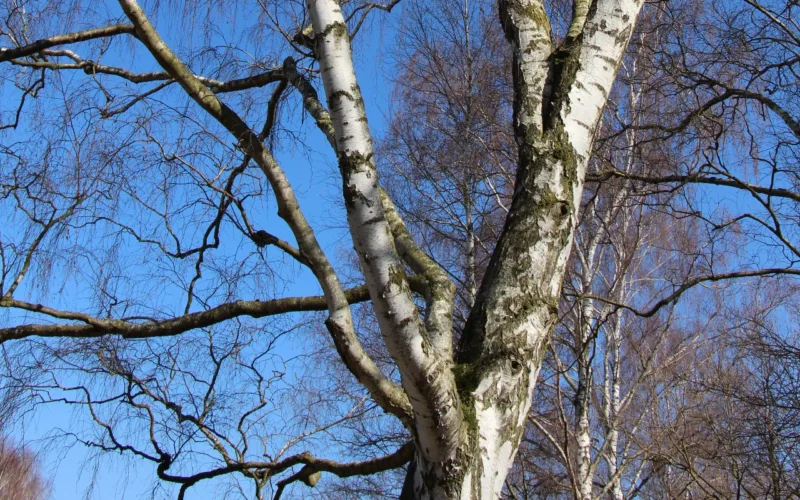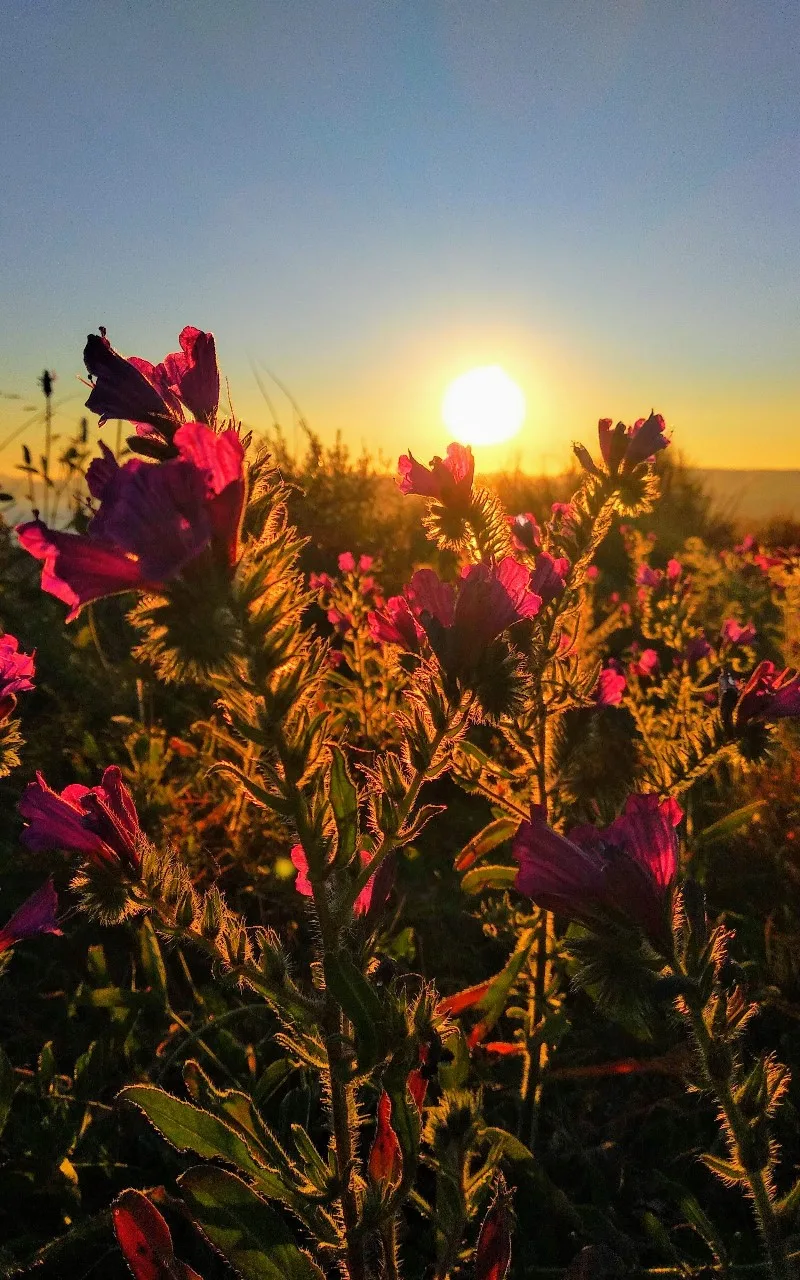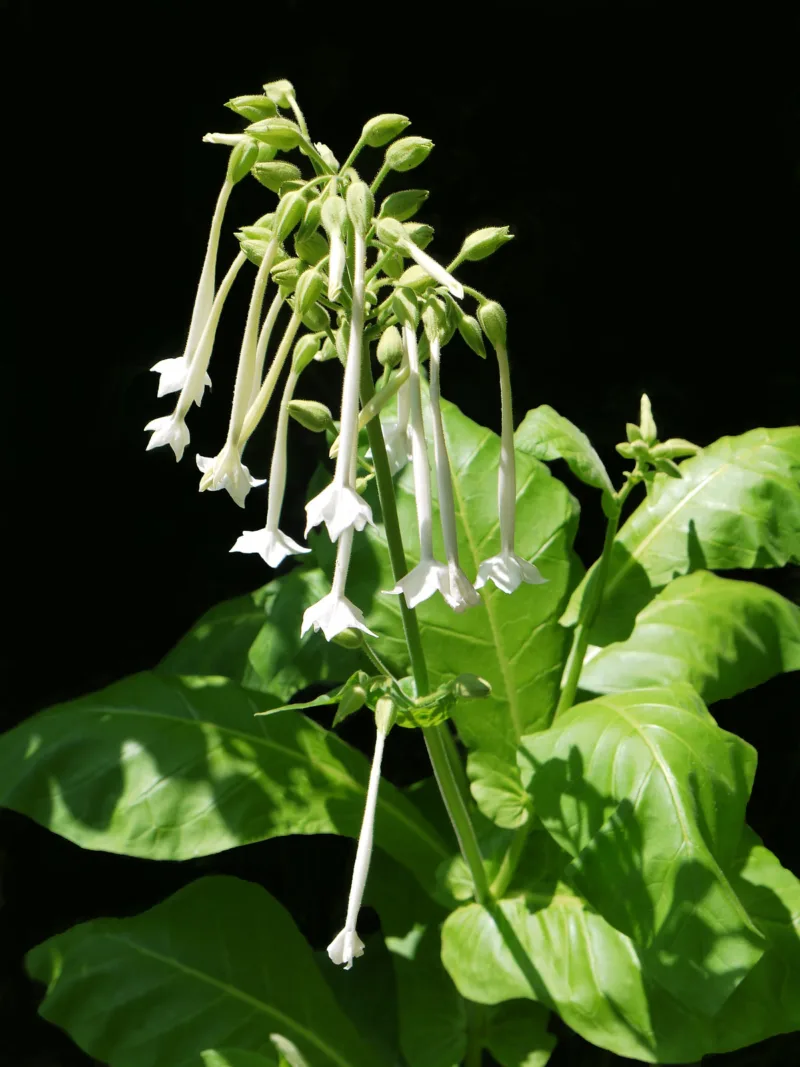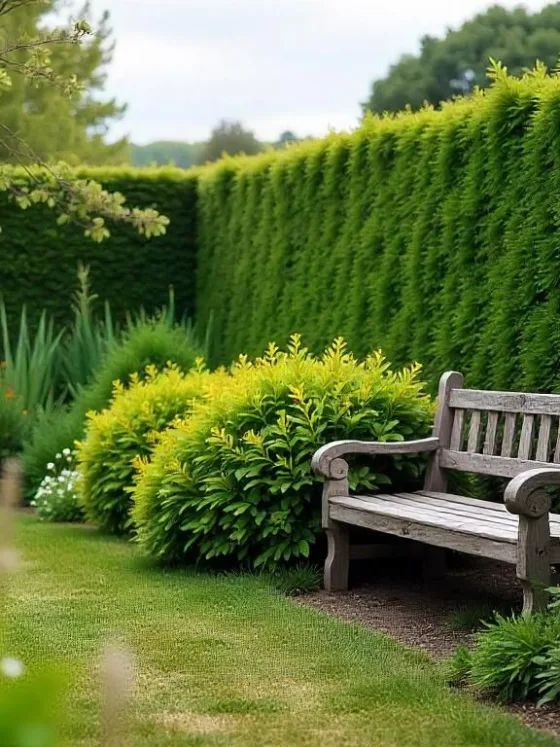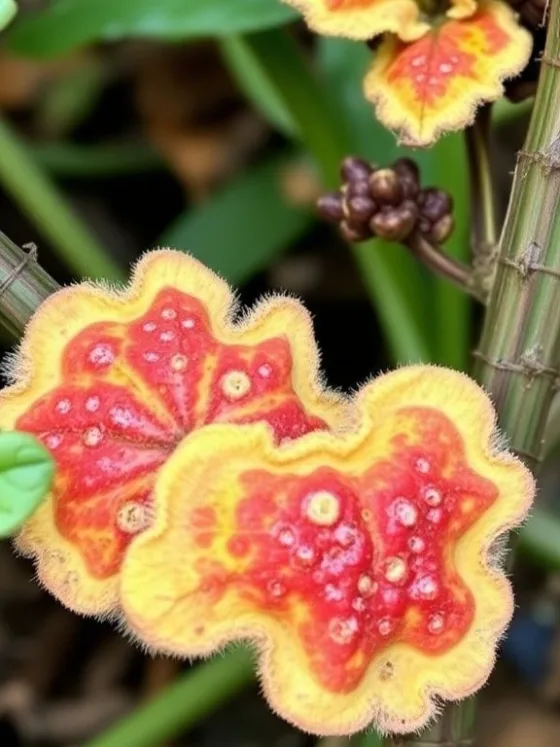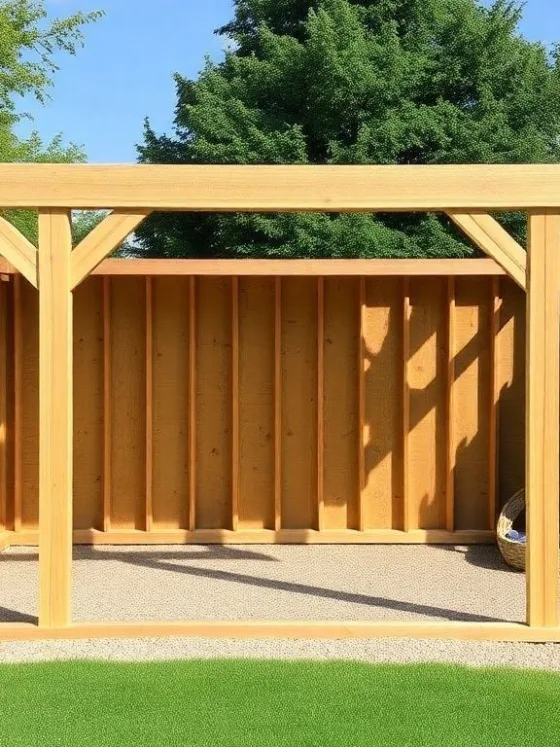Table of Contents Show
“On strolls through my garden in the evening, I’m drawn to one bed in particular. As night falls, this bed of herbs and flowers glimmers glows catches the moonlight, and tosses it back. A breeze stirs, and I’m enveloped by the scent. The fragrances of the evening seem sweeter and stronger than those of the day…” – Cathy Wilkinson Barash, Evening Gardens
Creating Magic and Mystery Under the Moonlight
What is a moon garden? A moon garden is a truly magical concept in garden design. In times of old, these gardens were developed to be enjoyed by the dim light of the moon, but in our modern times, artificial lighting has expanded the concept of moon gardens to refer to any gardens that are designed to be enjoyed at night.
These gardens are planted with a focus on flowers and foliage which reflect the soft lights of the night, and which are usually scented, bringing fragrance into the mystique. Moon gardens are particularly lovely for evening strolls or quiet meditation in solitude.
A History of Magic and Myth
There’s a fascinating history and tradition behind moon gardens that goes back to the time of the ancients. Our ancestors of ages long past used them as places of gathering for moon worship. They were the site of many celebrations that took place on warm summer evenings and were also the favorite locations for romantic interludes.
Historical records show that since gardening began, it was guided by the cycles of the moon. Factors such as when and how to plant, harvesting time, and storage times were all dictated by the phases of the moon.
Traditionally, seeds were sown by a full moon. Above-ground crops were planted during the period of a waxing moon to symbolically follow the pull of energy upwards with the return of the moon and paralleling the tidal movements. Root crops were typically planted in the 3rd quarter during the waning of the moon, to symbolically follow the energies moving downward with the moon.
The last quarter of the moon was a time for rest. It was also considered a time to reap, as plants were thought to be at their peak during this time.
It is believed that witches (who were also known as “wise women” in these ancient cultures) were the keepers and teachers of the above practices; they would gather their herbs for potions under the full moon to obtain their best essences.
There are even references that relate gardening and the moon to be found in the Bible; “Blessed of the Lord be this land… for the precious fruits brought by the sun and then for the precious things put forth by the moon.” (Deuteronomy 33: 13-14)
Moon lore is evident in most ancient cultures across the globe as well as some that are still present today. Numerous goddesses of the moon played a significant role in the mythologies and folklore of the great cultures; Diana of Roman mythology, Luna, Lada in the ancient Slavic cultures, Myesvietes, and Artemis in Greek mythology.
Many of these were explicitly objects of moon worship. Our word “month” itself is derived from the word “moon”, and “Monday” was once “Moonday”. Even the Farmer’s Almanac is filled with facts and advice for gardeners based on the moon.
Today, there is a resurgence of earth-based religions such as Wicca, Astaru, and others, which has created a new interest in things such as moon gardens. Some of these new age religions even directly name the 12 or 13 “moons” of the year – the “Mead Moon” for July, the “Wort Moon” for August, and the “Oak Moon” for December.
The moon fascinates me personally, a spell that is very much rooted in a fascination with these mythologies and the accompanying folklore. But mainly, I have fallen into the moon’s spell because of my day job; I only have the night to appreciate and spend time in my gardens!
The Makings of a Moon Garden
There are three key elements of a moon garden; the hardscaping, artificial lighting, and the plants themselves.
The hardscaping consists of the architectural elements which form the backbone of the moon garden. This includes the walls, fences, and trellises that divide and delineate the space, the areas provided for enjoyment or viewing such as arbors, pergolas, and benches, and the winding pathways and borders which guide the wanderer through the garden.
Hardscaping for a moon garden can also include certain features such as water ponds and basins, sculptures, and statuary such as bird baths and planters.
For these architectural elements, the attributes of color and texture are important when making selections for a moon garden.
Are they to become a focal point in themselves, or will they adopt a supportive role, adding to the overall charm and character of the space without being dominant features in the garden? Or, are they intended to disappear at night, allowing the plant material to upstage them?
For example, a climbing vine or clematis will appear to float in the air if hanging from a dark-colored arbor, trellis, or pergola.
Paths and walkways pose a particularly interesting challenge to the designer. When constructed from light-colored sand or crushed limestone, they tend to radiate and look mystical under the moonlight.
Lightly colored stepping stones make the path to an intended location obvious. On the other hand, darker-colored stepping stones can be a real treat at night, giving the illusion of walking on air or on the tops of holes!
Water can be another important design element in a moon garden composition. As long as it is clear, and still, water will add to the mysterious nature of the space by picking up and reflecting the soft lights of the night. Running water, such as that provided by a waterfall or a bubbler, will introduce soothing white noise that adds to the sounds of the evening and night.
Ornamentation can be as simple as a well-placed white boulder or a series of coordinated stones. It can also be as elaborate as a fancy statue or topiary which has been well-lit for full enjoyment. Strategically placed containers and planters will provide both focal points as well as places to grow annual herbs.
If placed next to a bench, the wanderer will brush up against them, releasing their haunting scents into the night. And speaking of benches, they should always be visible and obvious to encourage the wanderer to pause and fully absorb the composition.
No matter what you bring into the moon garden architecturally, make certain that it will enhance and remain in balance with the overall effect. Don’t make it so ostentatious that it steals the show or dominates the scene. Remember to always focus on the moonlight aspect of the garden.
Lighting the Moon Garden
Lighting is an important factor in creating an effective moon garden. Obviously, the garden is designed to come to life by the natural light of the moon. At those times when the moon is shining brightly and the sky isn’t obscured by clouds, nature delivers her performance in its fullest glory. These are truly special moments to be treasured and enjoyed when they happen because they are in fact relatively rare.
More often than not, though, the moon isn’t at a phase or location in the sky to contribute effectively to lighting a night garden, or it’s cloudy enough that the moon is obscured. That’s why the modern moon garden summons the aid of technology through artificial lighting to simulate the effect of the moon on pretty well any spring, summer, or fall evening when the weather permits.
Artificial lighting can not only supplement the moonlight when it’s not in play, but it can also accomplish lighting techniques that even the moon can’t deliver. It can be positioned to emphasize highlights in the moon garden such as selected plants, accents, or features.
It can be utilized to create shadows and silhouettes that play with the light and dance against the backgrounds, amplifying and distorting shapes and forms and creating visual lines that lead to mysterious places.
Accent lighting is available in fanciful shapes like hanging lanterns and butterflies, further setting the mood in the garden. Strategically placed low-level lighting can highlight specific areas of interest in the garden and can guide the night wanderer to points of interest and identify a change in the path, while spotlights can be used to highlight features or uplight interesting forms.
Artificial lighting can even be used to simulate the light from the moon itself if suspended from above, for example, if hanging from a tree over a private sitting area or on the rafters of a pergola.
The type of lights can also alter the mood of the composition. Christmas twinkle lights or fairy lights provide a filtering effect that makes the outdoors come alive.
The ability to control artificial lights can lead to special experiences for the senses. By turning them off, the sense of smell becomes more receptive, revealing many hidden scents emanating from the dark night garden.
Likewise, the sense of hearing is heightened, and the magical sounds of the night are augmented when carried on a light breeze. Through an aesthetic combination of plant selection, spatial design, and creative and sensitive use of exterior lighting, you can develop an outdoor garden that will be pleasant to relax in during the evening and night.
The Important Role of Plants
Plants serve many functions in the moon garden. The important design principle to remember is that every plant used needs to be an evening or night-blooming plant. The flowers of some plants such as tulips (Tulipa cv.) close for the night, and are therefore not able to contribute to the night effect.
Consider adding at least one plant for dramatic architectural effect. Small accent trees such as flowering crabs (Malus spp.), smaller maples such as Japanese (Acer palmatum), Korean (A. pseudosieboldianum) or Amur maple (A. ginnala), and pagoda dogwood (Cornus alternifolia) create interesting silhouettes and shadows when lighted to effect.
Trees that bring interest to the composition through their interesting sculptured forms include sumacs (Rhus typhina and R. glabra) when pruned into tree forms, flowering crabs, apples (Malus spp.), pears (Pyrus ussuriensis cv.) and Ohio buckeye (Aesculus glabra).
Evergreens bring a constancy and year-long appeal to the moon garden with their articulated forms. The glaucous foliage of Colorado blue spruce (Picea pungens var. glauca) and the blue upright juniper cultivars (Juniperus cv.) reflect some of the soft light and lend a silvery hue to the background.
Even certain deciduous trees can contribute to the fall and winter moon garden with their interesting naked forms; these include staghorn sumac (Rhus typhina), hawthorns (Crataegus spp.), and the corkscrew hazel (Corylus avellana ‘Contorta’).
The textured white bark of native aspen (Populus tremuloides) and paper birch (Betula papyrifera) will catch the moonlight all year round like ghostly sentinels standing guard.
Ornamental grasses are wonderful additions to a moon garden. The showy seed heads of giant maidenhair grass (Miscanthus sinensis cv.) catch the moonlight and rustle in the slightest breeze, while the strong architectural form of Karl Foerster feather reed grass (Calamagrostis x acutiflora ‘Karl Foerster’) provides a rigidly upright silhouette set against the rounder forms of the garden.
And herbs such as lovage (Levisticum officinale), angelica (Angelica archangelica), and fernleaf fennel (Foeniculum vulgare) not only introduce a fine texture to the night garden but reward the curious wanderer for stopping and savoring the fragrant foliage and flowers.
Flowers at Sunset
Flowers are an important part of the moon garden, both for their color and their fragrance. The performance starts at sunset when the low-angle light catches the flowers in just the right way. As Cathy Wilkinson Barash puts it in her book “Evening Gardens”,
“In the late afternoon, the rays of the sun lengthen, and the light is warm and mellow, making yellows, reds, and oranges stand out. As the light fades, some of the cooler colors – fuchsia and some blues, pinks, and purples – come to life and almost fluoresce.”
The placement of the garden is critical to properly capture the light of sunset. A west-facing garden takes the best advantage of the setting sun. Note how the colors of the flowers will change as the sun sets, and how the trees and shrubs will change in appearance as dusk turns to night.
Colors are very important at sunset and into the evening. Yellows, especially pale or pastel yellows, can last long into the night before finally expiring in the darkness.
Plants such as nasturtiums (Tropaeolum majus cv.) and sweet peas (Lathyrus cv.) contribute, with hardy azaleas (Rhododendron cv.) and petunias looking like small moons glowing in the early evening.
Other choices for yellow include late-season canna varieties such as ‘Pretoria’, ‘Wyoming Orange’ and ‘Portland Pink’. Moonbeam coreopsis (Coreopsis verticillata ‘Moonbeam’) and star zinnia (Zinnia angustifolia) reflect the moonlight and appear like dancing fairies in the breeze.
Pale-colored flowers provide an added contrast between the light and dark plants in the garden, looking like dried flower arrangements in the low light. Many will be the “fillers” in the moon garden, but still provide the best display of the theme.
There isn’t one particular shade that’s more effective than any other. Choices in pale yellow include Sweet Cream marigold (Tagetes erecta ‘Sweet Cream’), Primrose Beauty chrysanthemum, and Lemon Pixie lily (Lilium ‘Lemon Pixie’), while pale pinks would include cottage pinks (Dianthus plumarius), rock cress (Aubretia spp. and Arabis spp.), baby’s breath (Gypsophylla paniculata and G. repens) and lisianthus (Eustoma russelianum cv.). For pale blues, try moss phlox (Phlox subulata cv.), delphinium, and bluebells (Campanula spp.).
Read Also:
- About Gardening in a Wheelchair
- Lunar Gardening: Harnessing the Power of the Moon for Optimal Plant Growth
- A Guide to Repairing a Garden in the Fall
- Fall Gardening: What to Do with Plants
White and Silver Make the Moon Garden
It’s really the white flowers that steal the show in a moon garden; they almost seem to grow brighter at night.
They can be found in tall shrubs such as bridal wreath spirea (Spiraea x vanhouttei), Nanking cherry (Prunus tomentosa), and many-flowered cotoneaster (Cotoneaster multiflorus); and in smaller shrubs such as Annabelle hydrangea (Hydrangea arborescens ‘Annabelle’), Abbottswood potentilla (Potentilla fruticosa ‘Abbottswood’) and white-blooming roses such as Henry Hudson (Rosa ‘Henry Hudson’).
Perennials with white flowers include pearly everlasting (Anaphalis margaritacea), goatsbeard (Aruncus dioica), windflower (Anemone spp.), Shasta daisies (Leucanthemum x superbum cv.) and culver’s root (Veronicastrum virginicum).
Many naturally non-white perennials are available in white blooming cultivars, such as clustered bellflower (Campanula glomerata ‘Alba’), Russell’s White lupine (Lupinus ‘Russell’s White’), White Swan coneflower (Echinacea purpurea ‘White Swan’) and certain columbines (Aquilegia cv.).
There are countless named white selections of lilies (Lilium cv.), peonies (Paeonia cv.), irises (Iris cv.), and false spireas (Astilbe cv.), too many to even start naming here.
When it comes to flowers, the evening bloomers are most fragrant when they first open in the evening, attracting moths that flutter like angels from plant to plant.
White evening-blooming perennials include evening primrose (Oenothera spp.), Ozark sundrops (Oenothera macrocarpa), gas plant (Dictamnus albus), gooseneck loosestrife (Lysimachia clethroides) and certain daylily cultivars (Hemerocallis cv.) such as ‘Citrina’ and ‘Gentle Shepherd’.
Evening-blooming annuals include the extremely fragrant flowering tobacco (Nicotiana alata cv.), angel’s trumpet (Datura inoxia var. quinquecuspida & Brugmansia arborea), moonflower (Ipomoea alba cv.) and night phlox (Zaluzianskya capensis).
Silver foliage plants create a tapestry of texture in the moon garden and provide an effect that can last the entire season. Plants with variegated leaves create a wonderful foliage contrast in the moon garden, a glimmering presence in the moonlight.
Shrubs with sliver foliage include silver variegated dogwood (Cornus alba ‘Elegantissima’), tricolor willow (Salix integra ‘Albomaculata’ or S. i. ‘Hakuro Nishiki’), and buffaloberry (Shepherdia argentea).
There are many fine perennials with silver foliage including numerous wormwoods (Artemisia spp.), lamb’s ear (Stachys byzantina), campion (Lychnis coronaria), and wooly thyme (Thymus pseudolanuginosus), while some such as dead nettle (Lamium maculatum cv.), Bethlehem sage (Pulmonaria saccharata cv.) and plantain lily (Hosta cv.) have silver or white-variegated foliage.
Night bloomers bring some of the strongest fragrances into the moon garden and are especially worth seeking out. Here, trees and shrubs such as lindens or basswood (Tilia spp.), summersweet (Clethra alnifolia), French lilacs (Syringa vulgaris cv.) and mockoranges (Philadelphus cv.) give up their haunting fragrances to the night.
They are complemented by night-blooming perennials such as Honeybells hosta (Hosta ‘Honeybells’) and daffodils (Narcissus spp.), or annuals like heliotrope (Heliotropium cv.), night-scented stocks (Matthiola bicomis) and Jasmine-scented tobacco (Nicotiana sylvestris). Consider planting these together with herbs under your feet where you may walk or sit, or in pots so that you may run your hand over them to increase the sensual pleasure.
Final Words of Wisdom
The real key to designing a moon garden is to make sure that it is designed for your personal enjoyment. To help you find what that means for you, here’s a suggestion that has worked for me time and again in the past.
Pick a comfortable night when you can go out into your garden and just sit down for 15 or 20 minutes and observe and contemplate and think. Give some thought to a plan for your moon garden. Bring a pad and paper with you to jot down some notes as you get inspiration.
Think about the placement and style of the garden you will have. Consider its intended use; will you be the contemplative night wanderer, or will you want to share the experience with your friends and loved ones? Do you want a single large area dedicated to an evening or moon garden, or would you rather have several smaller sections of your yard targeted for moon gardens with different foci in different outdoor rooms?
Play around with various ideas until you find the solution that’s right for you and your landscape. But no matter what direction you choose, one thing is certain; it will be worth your while to bring a moon garden into your world. Besides encouraging the fairy folk to spend a little more time in your yard, you’ll be rewarded with a magical dimension to your gardens that you might not have even known existed!





